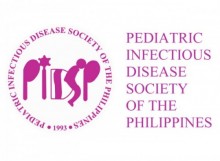Journal 2021 Vol.22 No.1
Clinical Profile of Pediatric Patients with Leptospirosis admitted at a Tertiary Government Hospital
Kay-Ann M. Pabalate-Aquino, M.D.
Abstract
Background: In the Philippines, Leptospirosis is a seasonal but common and prevalent disease with an average of 680 cases and 40 deaths annually. Cases result from exposure to contaminated flood, water, or soil. Several studies showed that males are more commonly affected, who are believed to be more exposed to the outdoor environment. In terms of pediatric population, early diagnosis is based mainly on clinical and epidemiological factors.
Objective: This study was conducted to determine the clinical features and outcomes of pediatric leptospirosis, as well as determine the prognostic factors associated with mortality.
Methodology: A descriptive retrospective study was done in a tertiary hospital from January 2007 – December 2019.
Review of all cases that satisfy the diagnosis of Leptospirosis by WHO Criteria (2003) was done. The data extracted from the chart were encoded using Microsoft Excel; processed and analyzed using STATA SE 15 to generate the required output.
Results & Conclusion: In this 12-year study, a total of 85 cases of leptospirosis in children, aged 0-18 years, were reported. Leptospirosis predominates in males in the adolescent age group. It is noted all year round but noted mostly during the rainy months which increases the risk to exposure to contaminated water through wading, especially in the cities of Navotas, Malabon and Tondo. The mean duration of symptoms was 3.6 days. The most common clinical findings noted in this study were fever, gastrointestinal symptoms, conjunctival suffusion, oliguria, calf tenderness and headache. Abnormal laboratory findings were leukocytosis, neutrophilia, thrombocytosis, elevated BUN and creatinine, hypokalemia and hyponatremia. Significant correlation with poor outcome was found in patients who have had pulmonary hemorrhage.
Keywords: Leptospirosis, leptospirosis in children, clinical profile
https://doi.org/10.56964/pidspj2021220110
| View Full Article in PDF format |
Journal 2021 Vol.22 No.1 Original Articles 6pidsp@uplink.com.ph2022-12-08T07:05:52+00:00
